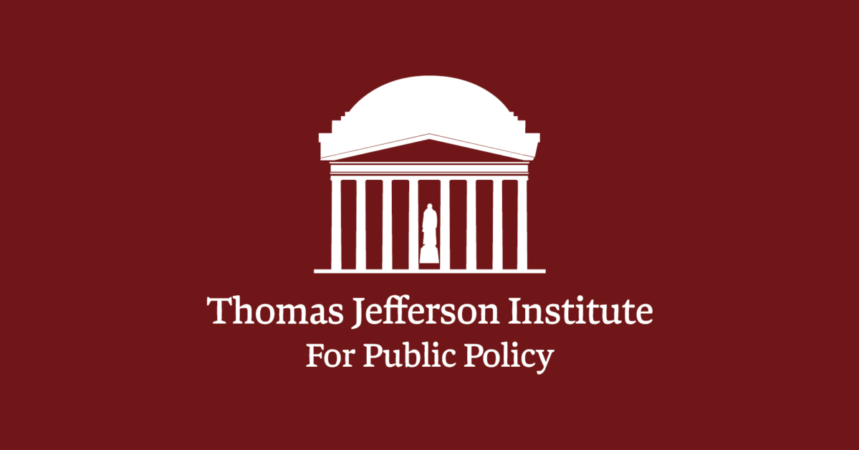Defined benefit (DB) plans now are part of the fiscal debate in many states and localities, and Virginia is no exception. Virginia has been a leader in responsible and innovative pension plan management. Yet, the retirement plan places a financial burden on the Commonwealth. After the 2010 valuation, VRS’s funding ratio is about 70%. This is a decline in the previous funding ratio, reflecting investment losses incurred in 2008 and 2009 and a change in the assumed investment return from 7.5% to 7.0%. The unfunded actuarial accrued liability is about $17 billion. The prospects are that higher annual contributions will be required from the Commonwealth for at least several years. Fiscal leaders in the Commonwealth are joining other states in considering alternatives to the current DB plan structure.
A number of factors led to the current high level of contributions. Foremost among them are that investment returns have been below assumptions because of the financial crisis, and the Commonwealth did not make the full contributions calculated by the actuary in 17 of the last 20 years. Also, contribution rates tend to grow as the number of retirees relative to the number of employees is table or grows.
Virginia made several changes to its retirement plans in the last two years and considered others. These measures are not sufficient to increase the funded status of the system or relieve the Commonwealth of high and volatile contribution rates any time soon.
Further reforms to consider can be divided into two categories: those affecting only new employees, and those affecting all employees.
New employees. A different retirement benefit would be created for new employees. Virginia already did this for employees hired after June 30, 2010, but it might want to consider more changes for new employees. The new employees could receive a defined benefit plan with lower benefits than the older plans, or they could be offered only a defined contribution plan. They also could be offered a choice between a defined contribution plan and a defined benefit plan.
Most states are following the path Virginia took in 2010, and offering new employees a DB plan that pays reduced benefits. Benefits are reduced by a combination of changing the age and years of service required to receive full benefits or changing the benefit received for each year of service.
Virginia would be well-advised, however, to consider creating a hybrid plan that is partly a DB plan and partly a DC plan or is two separate plans. Hybrid plans are proving valuable in the public sector. The federal government’s pension reform from the 1980s is a hybrid with a modest DB plan and a robust DC plan. Utah, Washington, and Michigan recently created hybrid plans, as did Orange County, California.
Current employees. Creating a new benefit structure for new employees will reduce costs over the long term. Policymakers should be aware, however, that simply moving new employees to a new plan won’t reduce costs over the next few years. In fact, creation of the new plan will increase the cost of the current DB plan until it winds down. The greater the number of new employees joining the new DC plan instead of the DB plan, the more the cost of running the DB plan will increase.
Virginia had experience with this in 2011. A proposal was considered to close the DB plan to new employees and enroll all new employees in a DC plan. The measure was not enacted after the fiscal impact statement of the proposal showed this would significantly raise the cost of the DB plan.
Any savings and certainty from pension reform must come from changing the benefits current employees receive.
If the Commonwealth chooses to alter benefits for current employees, it can take one of two routes regarding the current DB plan.
Freeze the DB plan. Employees would stop accruing new benefits and would retain vested benefits. They would immediately be shifted to the new plan, whether it is a DC plan, a hybrid plan, or a DB plan with reduced benefits, for all future benefits. The Commonwealth would have to fund the current unfunded liability, either with payments over time or one large payment. In addition, it would have to be prepared to put additional money in the DB plan (in either a lump sum or higher annual contributions) should actual results not match the assumptions.
Continue the DB plan, but change the benefits. The Commonwealth took steps in this direction in recent years by requiring current employees to make contributions to the plans and reducing the inflation-indexing of benefits. Additional steps in this direction could be taken by a combination of further reducing inflation indexing, requiring higher contribution, and changing the benefit formula. Another way to reduce costs is to delay the date at which full retirement benefits are first paid.
Pension reform is high on the agendas of many state and local governments. The Commonwealth implemented some reforms in recent years. High and volatile contribution rates, significant unfunded status, and unfavorable demographic trends should cause the Commonwealth to consider additional reforms. The full range of options should be examined, drawing from experiences in both the private and public sectors.
(Robert C. Carlson is editor of the monthly newsletter and web site, Retirement Watch. Carlson is Chairman of the Board of Trustees of the Fairfax County Employees’ Retirement and was a member of the Board of Trustees of the Virginia Retirement System from 2001-2005. He was appointed to the Virginia Retirement System Deferred Compensation Plans Advisory Committee in 2011. )






